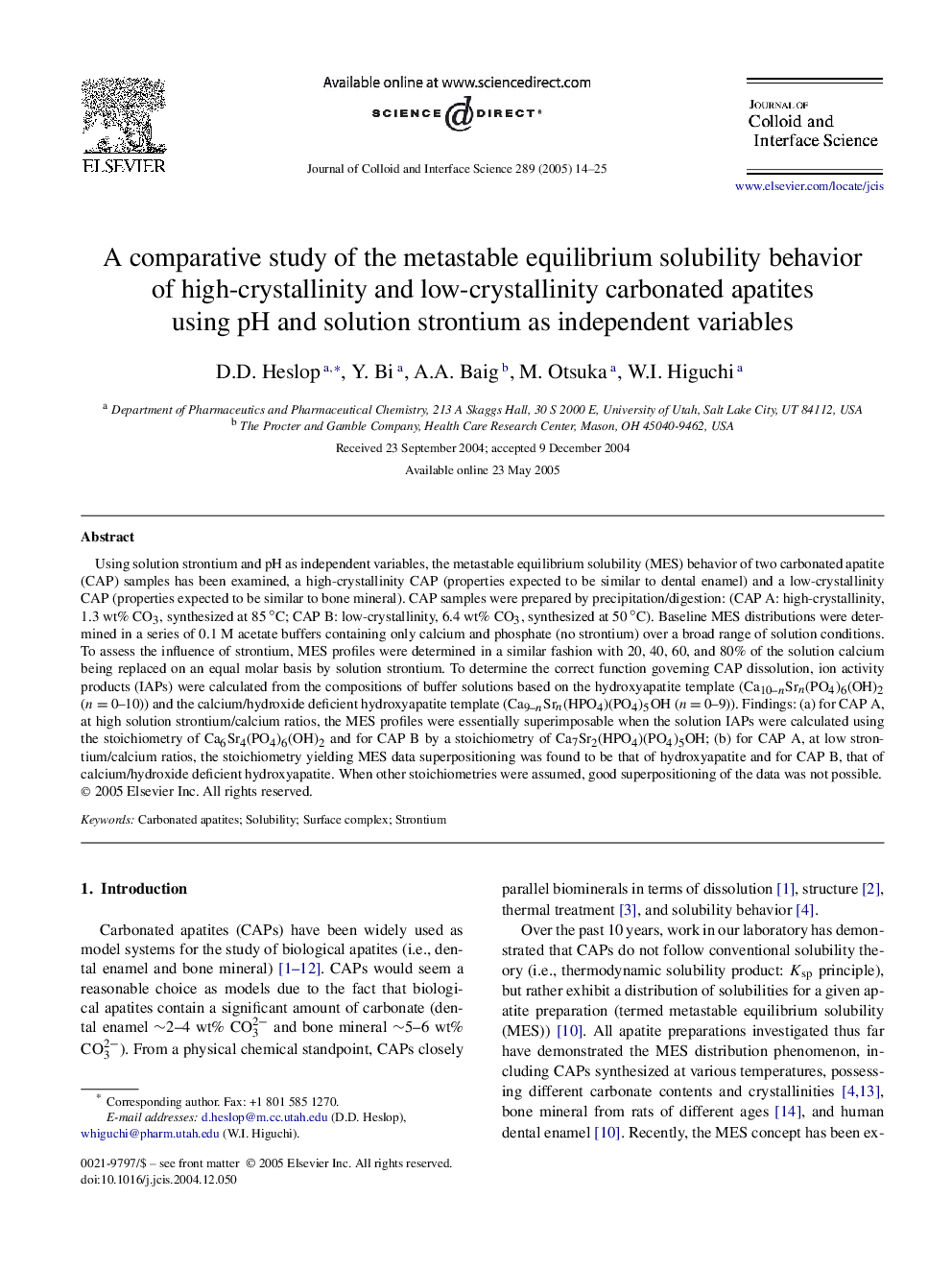| Article ID | Journal | Published Year | Pages | File Type |
|---|---|---|---|---|
| 10377724 | Journal of Colloid and Interface Science | 2005 | 12 Pages |
Abstract
Using solution strontium and pH as independent variables, the metastable equilibrium solubility (MES) behavior of two carbonated apatite (CAP) samples has been examined, a high-crystallinity CAP (properties expected to be similar to dental enamel) and a low-crystallinity CAP (properties expected to be similar to bone mineral). CAP samples were prepared by precipitation/digestion: (CAP A: high-crystallinity, 1.3 wt% CO3, synthesized at 85â°C; CAP B: low-crystallinity, 6.4 wt% CO3, synthesized at 50â°C). Baseline MES distributions were determined in a series of 0.1 M acetate buffers containing only calcium and phosphate (no strontium) over a broad range of solution conditions. To assess the influence of strontium, MES profiles were determined in a similar fashion with 20, 40, 60, and 80% of the solution calcium being replaced on an equal molar basis by solution strontium. To determine the correct function governing CAP dissolution, ion activity products (IAPs) were calculated from the compositions of buffer solutions based on the hydroxyapatite template (Ca10-nSrn(PO4)6(OH)2 (n=0-10)) and the calcium/hydroxide deficient hydroxyapatite template (Ca9-nSrn(HPO4)(PO4)5OH (n=0-9)). Findings: (a) for CAP A, at high solution strontium/calcium ratios, the MES profiles were essentially superimposable when the solution IAPs were calculated using the stoichiometry of Ca6Sr4(PO4)6(OH)2 and for CAP B by a stoichiometry of Ca7Sr2(HPO4)(PO4)5OH; (b) for CAP A, at low strontium/calcium ratios, the stoichiometry yielding MES data superpositioning was found to be that of hydroxyapatite and for CAP B, that of calcium/hydroxide deficient hydroxyapatite. When other stoichiometries were assumed, good superpositioning of the data was not possible.
Related Topics
Physical Sciences and Engineering
Chemical Engineering
Colloid and Surface Chemistry
Authors
D.D. Heslop, Y. Bi, A.A. Baig, M. Otsuka, W.I. Higuchi,
